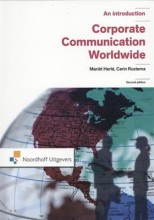Dating - Dating methods chart - Problems/caveats
8 important questions on Dating - Dating methods chart - Problems/caveats
Dendrochronology (problems or caveats)
- Comparison to a master curve necessary
- Local variations
- Not all species are suited
Ice layer counting (problems or caveats)
- Comparison to a master curve necessary
- Local hiatus (a space where something no longer is)
Milankovitch cycles (problems or caveats)
Sedimentation hiatus
- Higher grades + faster learning
- Never study anything twice
- 100% sure, 100% understanding
Cosmogenic nuclides (problems or caveats)
- Often difficult to measure
- Present in very low amounts
Radiocarbon (problems or caveats)
- Calibration curve is wiggly due to differences in production of atmospheric C14 in the past
- Therefore some age ranges have better resolutions than others
- AMS-dating: allows the analysis of very small samples from very old time periods, but it will have a larger error
- Contamination by small amounts of modern or ancient carbon can strongly affect date estimates
- Bioturbation, root penetration, inwash, etc. Can all disturb the original carbon scource
U-Th / U-series (problems and caveats)
- Uranium is water-soluble, so it can enter and leave the system at different points in the formation of the source rock. Because of this researchers must assume an early uptake or late uptake model when making age estimations. These problems can make the age estimates quite large
- Early uptake = the uranium was deposited when the stone was first formed
- Late uptake = the uranium entered the stone towards the end of the formation
K-Ar and Argon-Argon (problems an caveats)
- Escape of daughter isotopes
- Easy resetting
Optically Stimulated Luminescence (problems and caveats)
- Exposure to light for a few tens of seconds resets the clock
- This is the basis for dating the time since firing of ceramics
- Can also leave the sample vulnerable to resetting during use, burial or recovery
Try our study magic for free
a PDF, study it super fast
- No sign up, email or credit card needed!
- AI makes unlimited flashcards
- Get unlimited quizzes and tests
- Ask AI anything
Create a notebook
- No sign up, email or credit card needed!
- Have and keep perfect overview
- Make flashcards, notes and mind maps
- Review, test and score!
The question on the page originate from the summary of the following study material:
- A unique study and practice tool
- Never study anything twice again
- Get the grades you hope for
- 100% sure, 100% understanding
Remember faster, study better. Scientifically proven.






























